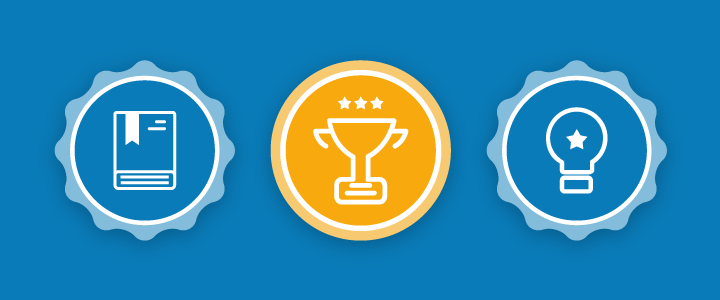
3 min reading time
Gamification for eLearning, an Explanation
Gamification is the insertion of game mechanics into a process to make it more attractive for the user to complete and/or repeat. It’s something that is used without most people ever really stopping to think about it.
When using products and services, you are often met with visual signals indicating where you are in a process or activity, the impact of the activity and sometimes a reward that you will receive upon completion.
Gamification is a powerful tool in eLearning and is used to increase engagement and completion of training. In this post, we explain what exactly gamification is, how it is used and the benefits that can occur.
What is gamification?
You may think that games are not serious, however, there is strong data that suggest games can be very powerful. There are only a handful of billion-dollar apps on the market and yet games companies are strongly represented with the likes of King, Supercell, and Zynga.
Gamification is not, however, the creation of games for business. It is also not about creating something from scratch. It is about augmenting the effect of an existing process by applying game mechanics that make them engaging. Gamification’s purpose is to influence behavior and reward participation.
Gamification in daily life
As mentioned, Gamification is used in your daily life, and you may not even be aware of it. Loyalty cards place you on a particular level based on the points that you accrue over time, the completion of your profile on a website will show you a progress bar to encourage you to commit more details, fitness apps like Nike Run give you a clear indication of your improvement and encourage further use.
All of these mechanics play into our competitive nature and our hard-wired desire to collect. We are after all ‘hunter-gatherers’. The real question is what is the actual value of gamification mechanics?
One of the most interesting examples of gamification is Foldit, a puzzle game that actually helps cancer research by making contributing data ‘fun’. By making the interaction with the data tool engaging and fun, 240,000 people began ‘playing’ with it and a solution to a 15-year-old question was found in 10 days.
Gamification in eLearning
A lot of organizations that are not directly connected with games have paid attention to how those mechanics could be mapped across to their own industry. This is especially true of the eLearning industry.
With gamification mechanics, you are given a series of goals to achieve. These mechanics usually support the motivation to complete the task rather than being the sole driver. In eLearning, the learner is tasked with completing their courses or learning paths as part of an overall training program.
The gamified elements help to make this process work more smoothly for the organization and in a more engaging manner for the learner. When eLearning gamification is done correctly it will give the learner a nice sense of momentum through achievement.Points and Badges
The basic elements of gamification in eLearning are:
- Points
- Badges
- Levels
- Leaderboards
The desired outcomes are:
- Motivate and engage learners
- Helps to create healthy competition
- Emphasize goals that have been set
How will gamification affect your eLearning strategy?
When you are creating your eLearning program you can use gamification as another layer to increase adoption, competition, and engagement. Once you have carefully crafted your courses and learning paths you now need to decide how you will implement your strategy against them.
Decide what will suit your organization and then experiment with badges and points levels to make the process interesting and engaging for your learners. If you are struggling to get your learners to interact regularly with your LMS why not have a daily login badge? If you want to promote an important course, perhaps attaching a larger number of points will appeal to those with an eye on leaderboards.
Conclusion
Gamification is a great way to augment your eLearning strategy by tapping into the human behaviors of collection and competition.
Once you have established some great course material and have a well-run eLearning strategy, gamification can help influence behavior to increase adoption, completion, and engagement with training.
Gamify Your Training Delivery Today
Train your employees, partners, and customers with LearnUpon. The powerful learning management system that has the features and a knowledgeable team you need to achieve training success.
Get your free trial and demo today!



